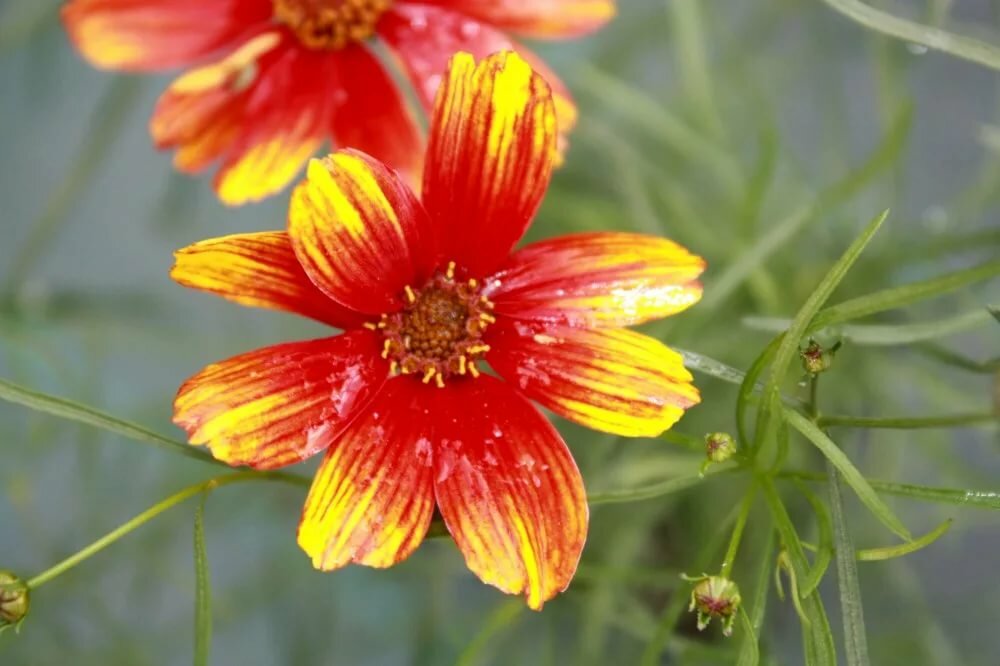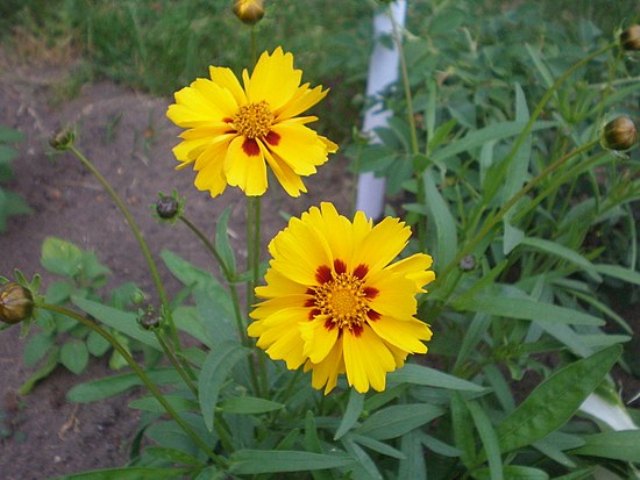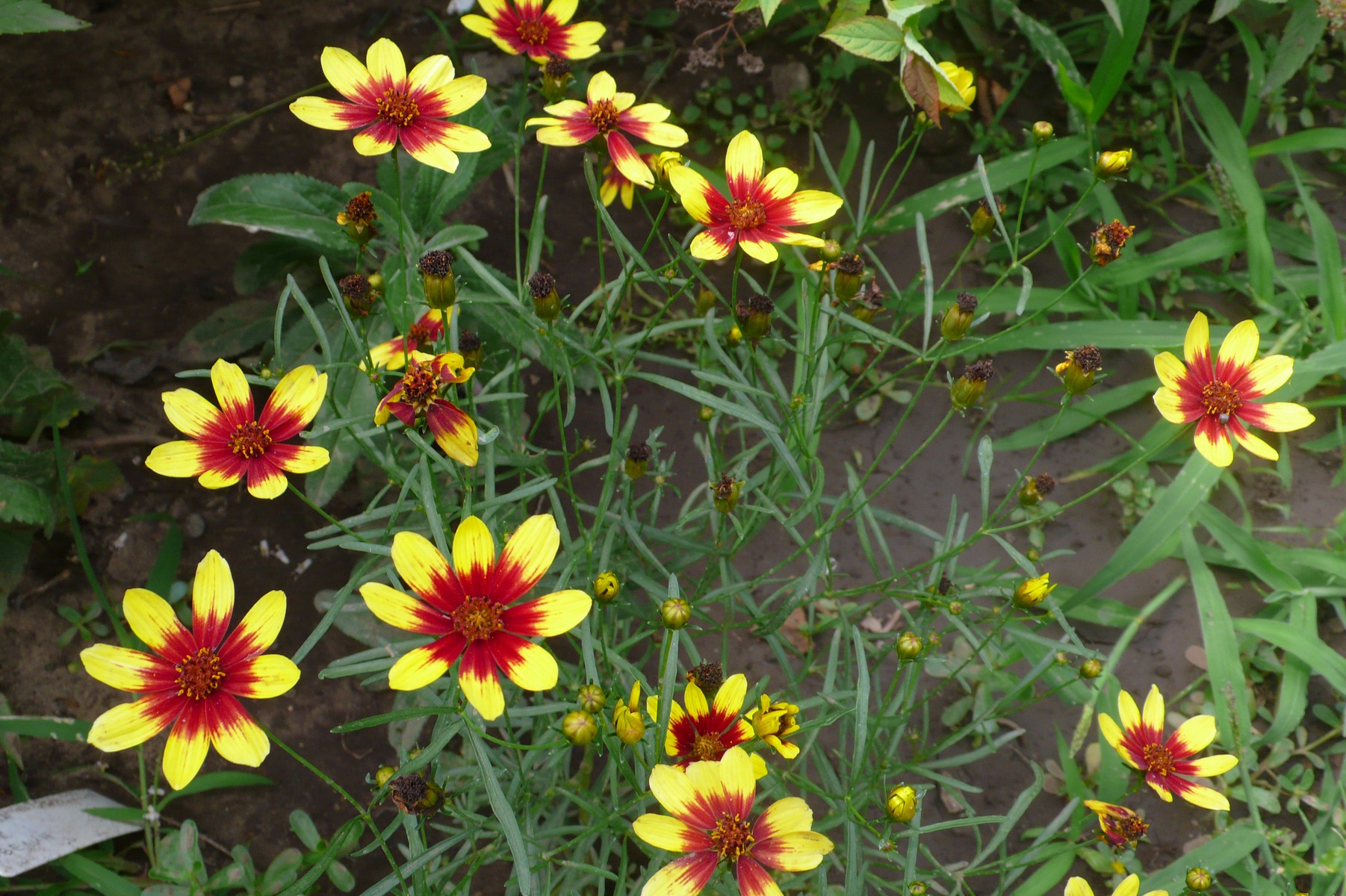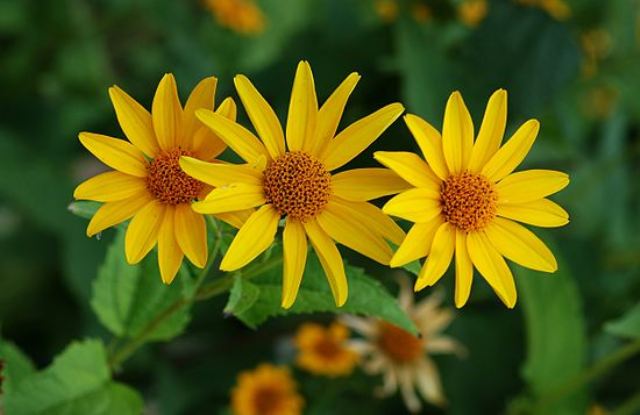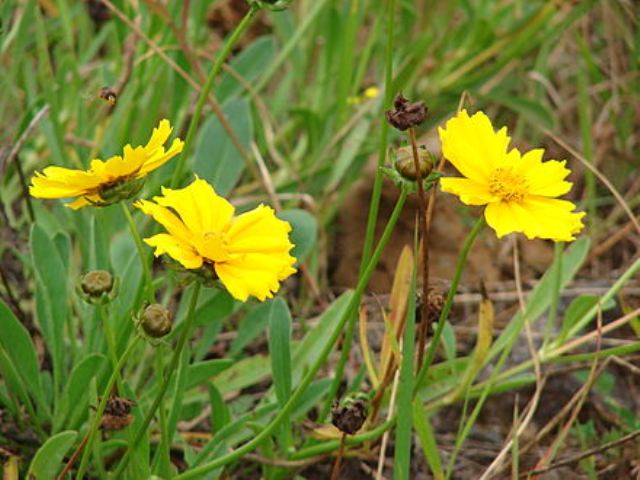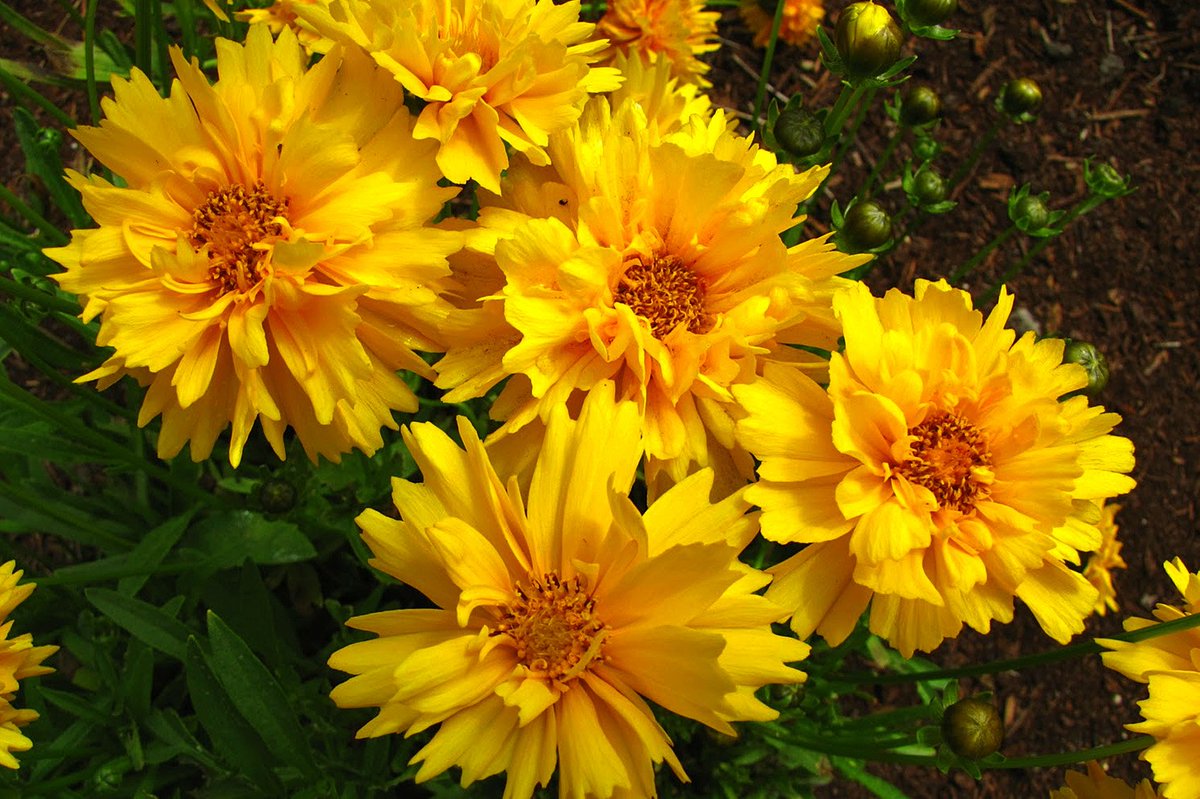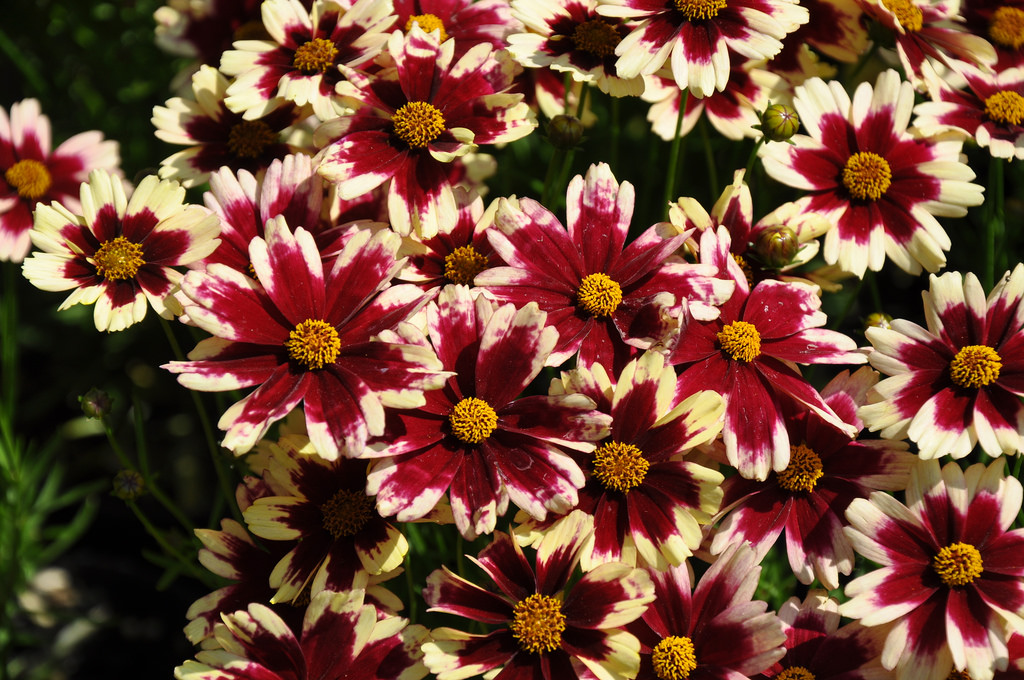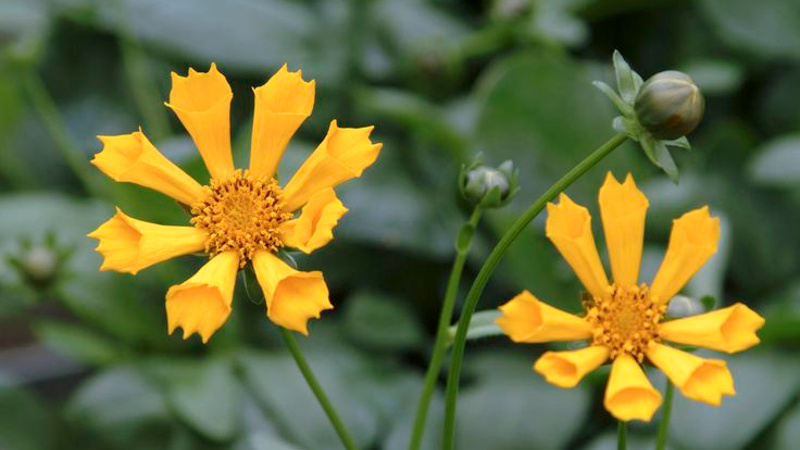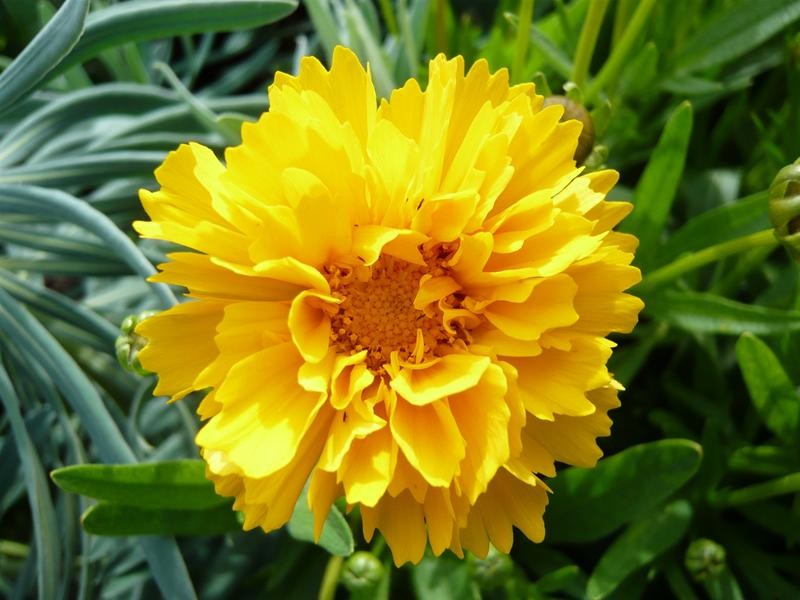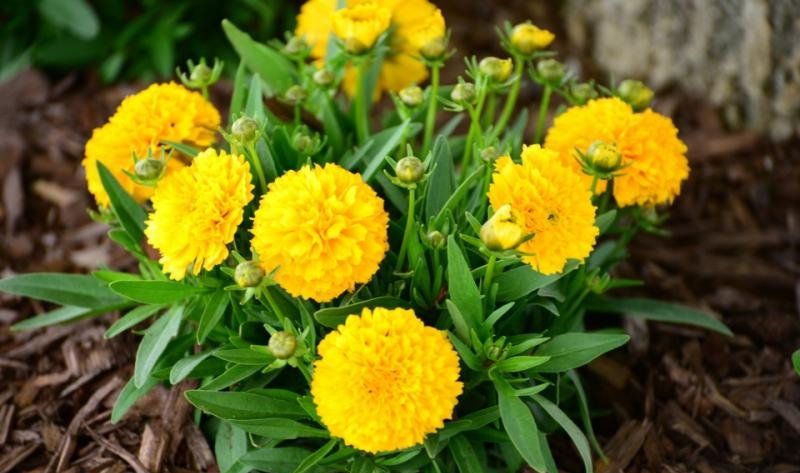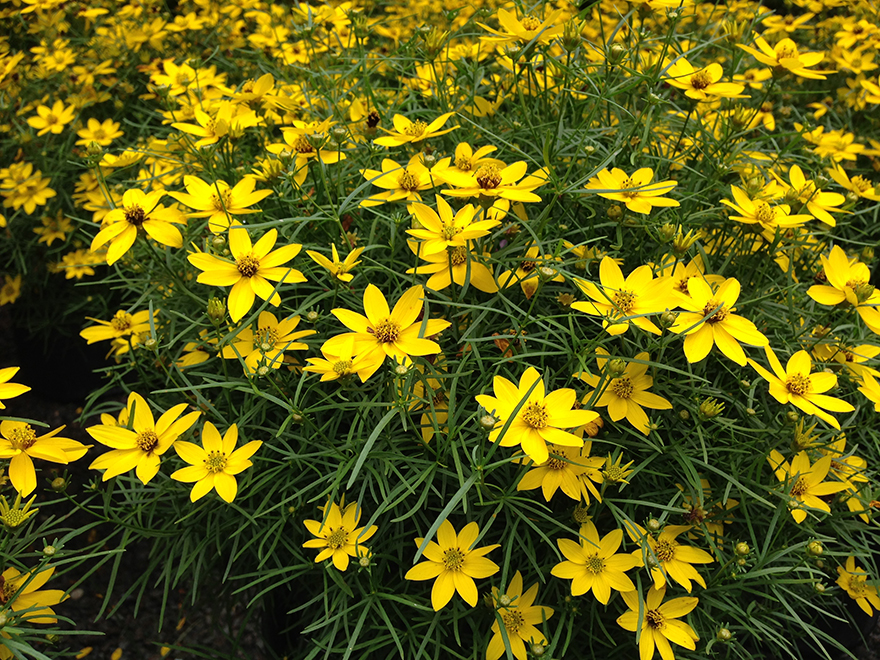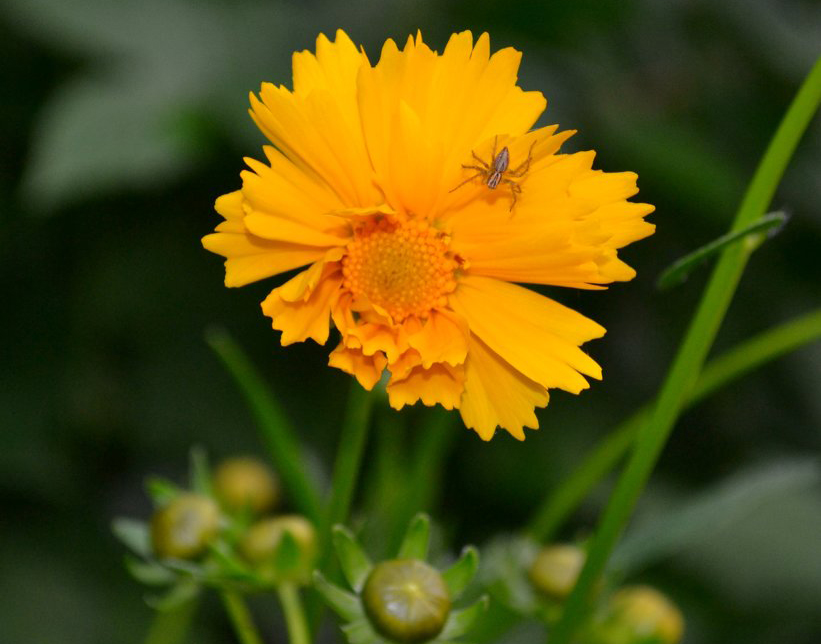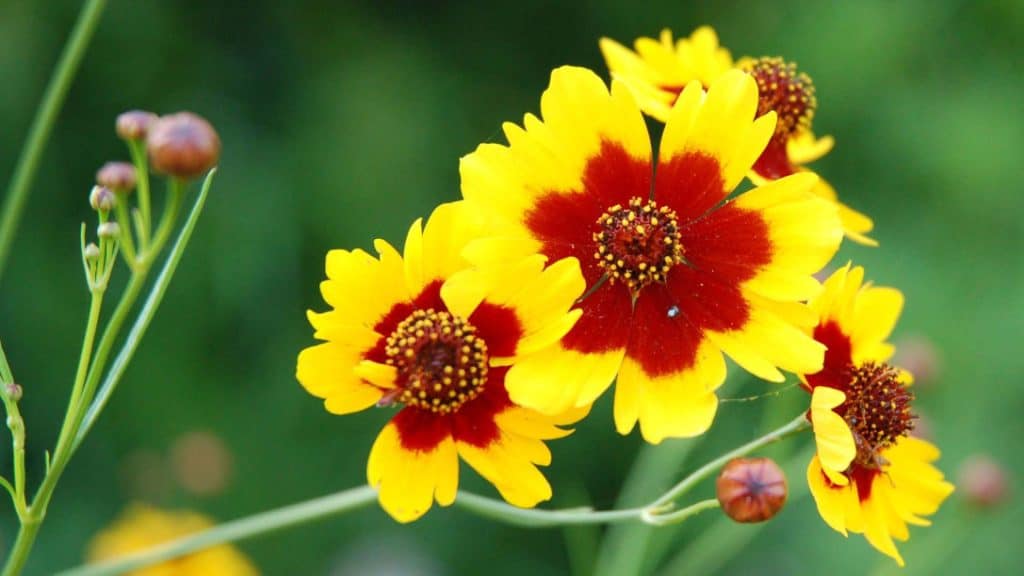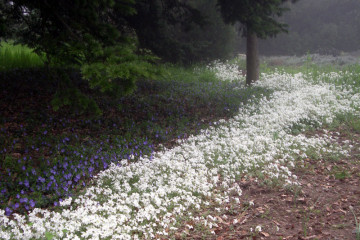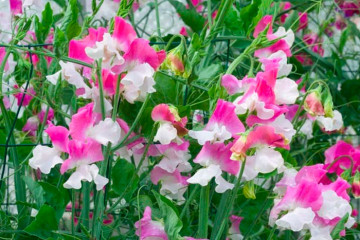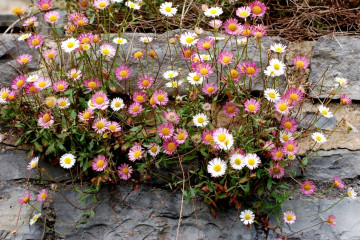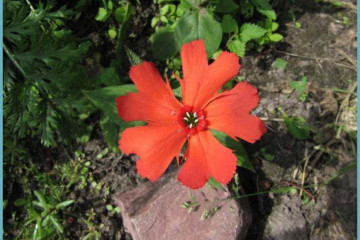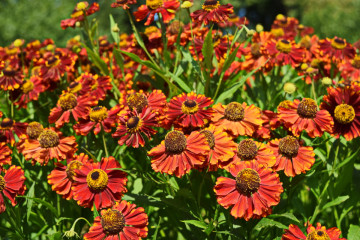Coreopsis (Coreopsis) perennial
Content:
A perennial flower that burns with yellow, red, pink, orange lights on flower beds in central Russia is coreopsis. He is loved for its unpretentiousness, a rich selection of tall and dwarf varieties, long flowering throughout the summer.
How long-term coreopsis looks like
The appearance of independent species of coreopsis is very different, both in the size of leaves and flowers, and in shape and color. But different varieties have common features.
Plant characteristics
All coreopsis are rhizome herbaceous perennial plants, the height of which ranges from 20-120 cm.Most often, flowers (inflorescence-basket) from 2 to 8 cm in diameter have yellow petals (marginal ligulate flowers) with jagged edges, sometimes with a brown core , but there are also other shades.
After ripening, each inflorescence produces an average of 500 seeds. Some species are grown as annual crops.
Coreopsis flower - which family it belongs to
The genus Coreopsis (lat. Coreopsis) belongs to the Asteraceae family (lat. Asteraceae), and has about a hundred species, of which 30 are cultivated as garden ornamental plants. All species come from North or South America. The name translated from Latin means "bug" and "seed", and is given for the external similarity of seeds to insects.
Briefly about the history of appearance
The genus Coreopsis was first described by Karl Linnaeus in his botanical classification in 1753.Since then, the flower has gained fame and popularity, becoming a frequent decoration of flower beds and gardens.
Description of Coreopsis Perennial Plant Species
On sale you can find seeds of various types of coreopsis. To buy a suitable variety for a flower bed or rabatka, you need to have an idea of their features.
Coreopsis verticulate
Perennial 60-90 cm high and up to 60 cm wide. Rigid branched stem at the ends of the shoots has single large simple flowers 3-5 cm in diameter. The most famous varieties are Zagreb with lemon and Moonbeam with gray-yellow petals. Suitable for growing in containers.
Coreopsis grandiflorum
The species of grandiflorum differs from others in that it reproduces mainly in a vegetative way, and not by seeds. Plant height on average 45-60 cm with a similar width. The leaves are lanceolate or lanceolate-dissected. The predominant color of the flowers is yellow.
Lanceolate
A low-growing perennial, mostly only 10-30 cm high, but there are varieties that stretch up to 60 cm. The leaf is lanceolate, petiolate, up to 12 cm long, green.
Inflorescences 1.5-3 cm across, predominantly golden yellow in color. A peculiarity of the species is a very long flowering, sometimes from March-April to the end of summer.
Terry
This group of perennial low-growing varieties is distinguished by almost spherical flowers, in which the core is often not visible at all behind the long petals. The foliage can be lanceolate or lanceolate-dissected, colored green or dark olive.
Variegated
In another way, such varieties are called variegated. The foliage of a narrow lanceolate shape is painted in a pale green shade with whitish-yellowish asymmetric chaotic spots. In bright light, the leaves curl slightly from the edges inward. The flowers form on long, thin pedicels.
Hybrid
Thanks to the work of breeders, all kinds of colors of this plant have been bred. So, natural forms do not have pure red, violet, purple tones. But it is quite possible to buy the seeds of such a coreopsis if you want to grow some unusual variety.
Others
There are many very popular types of coreopsis that are not uncommon and are freely available for sale:
- ear-shaped (lat.Coreopsis auriculata) - its inflorescence is formed by flowers with long reed petals rolled into tubes;
- pink (lat. Coreopsis rosea) - the name speaks for itself, the flowers are painted in bright shades of pink or purple;
- Coreopsis tinctoria (Latin Coreopsis tinctoria) - its seeds are dyed yellow when water is soaked;
- ferule-leaved (lat.Coreopsis ferulifolia) - the marginal flowers of the inflorescence are ligulate flowers of an elongated oval shape, resembling simple (non-double) dahlias.
Most popular varieties
Every gardener has his own favorite variety of coreopsis, as well as its shade. New hybrids, which combine attractive characteristics such as hardiness and a very long flowering period, are attracting particular attention.
Coreopsis Earley Sunrise
The cultivar belongs to the species Coreopsis grandiflora with yellow double inflorescences. Bushes in height - only 40 cm Leaves - narrow, long, light green. The diameter of the inflorescence is at least 5 cm.
Golden globe
The variety blooms in mid-summer in double, bright yellow, almost spherical single flowers, which in appearance are easily confused with terry marigolds. Distinctive features: short stature - no more than 30 cm in height, dense rosette of light green lanceolate leaves with two characteristic lateral notches along the edge.
Sunshine
A variety 30-40 cm high is easy to distinguish from others by the unusual color of the flower - its core and marginal petals have the same rich lemon-yellow color. The foliage and stems, unlike others, are colored not in a light, but in a dark green shade.
Zagreb
A variety of whorled coreopsis. A characteristic feature is the threadlike dark green foliage. The golden flowers resemble chamomile. The height of the bushes is about 35-45 cm.
Terry sun
A very tall variety (about 80 cm). Large double flowers up to 6-8 cm in diameter are painted in a uniform yellow tint. In one place it usually grows up to 3 years, after which it needs to divide the bushes.
Golden baby
Branched stems extend up to 40 cm in height. Double flowers up to 6 cm in diameter, sunny yellow with a darker center. Petiolate lanceolate leaves grow along with the stem, gradually decreasing in size. Blooms for about 2 months from July.
Others
A great variety of varieties have been bred, both tall and very compact. The most famous are: Heaven's Gate, Sweet Dreams, American Dream, Mayfield Giant, Lemon Punch, Sonnenkind, etc.
How Coreopsis reproduces
Perennial varieties can be easily propagated by dividing the rhizome.Coreopsis also propagates by cuttings, and some varieties by seeds.
Dividing the bush
The bush already available in the garden plot is dug out after the full end of flowering. With a sharp tool, the rhizome is cut vertically into 2-3 parts, immediately planting each of them separately.
Growing from seeds
In the final decade of March, seeds are sown for seedlings, or at the beginning of May - immediately in open ground. Seedlings should be expected within 1-2 weeks. Seedlings are transplanted into flower beds at the age of 4 weeks, after a week of hardening.
Cuttings
Cuttings 10-15 cm long can be cut from an adult plant in late spring, when the ground part has time to grow and form. Planting is carried out immediately in open ground, providing light shading and regular watering in the first couple of weeks.
Perennial coreopsis - planting and care
If annual coreopsis is propagated only by seeds, then perennial planting can be carried out with seedlings throughout the season. Planting should be looked after throughout the season.
Watering
The need for water is moderate. If it rains in the region every week, then artificial irrigation will not be required. In heat and drought, watered so that the soil remains slightly moist, but not waterlogged.
Spraying
None of the varieties require it. Moreover, drops on lanceolate leaves in the daytime can leave sunburn on them.
Humidity
The plant tolerates dry air well, which is not an obstacle to long and abundant flowering.
Priming
The plant prefers loose, fertile soils with little lime content. The more fertile the land, the larger the flowers will be.
Top dressing
In early spring, the bushes are fed with nitrogen fertilizers to stimulate foliage growth. Later, for abundant flowering, it is best to add organic matter, for example, mulch the soil around with compost.
When and how it blooms
Flowering times can vary greatly between varieties, ranging from 2 to 6 months, usually ending with the arrival of frost.
Types of flowers
Coreopsis has simple and double flowers. Separately, it is worth noting the ear-shaped varieties with marginal ligulate flowers rolled into tubes with serrated edges along the edge of the inflorescences-baskets.
Flower shapes
The most common flower shape is a simple basket, with an even number of long reed flowers along the edge and many short tubular flowers in the center. In double varieties, all flowers in the inflorescence-basket are approximately the same - long.
Flowering period
The minimum duration is 80 days. Coreopsis usually bloom from May to September, some varieties from July to October, but there are also earlier varieties.
Changes in care during flowering
With the blooming of the first buds, a complex mineral fertilizer should be applied. Further feeding is carried out every month. Watering is performed as needed.
Transplant after purchase and during reproduction
Potted seedlings can be planted outdoors at the end of May. If you need to divide the bush, then this should be done no earlier than the second half of August at least 3 weeks before the expected frost.
Possible growing problems
In adverse weather conditions, the plant can become a victim of fungal infections, as well as invasion of insect pests.
Leaf problems
On the bushes, you can find the following alarming symptoms:
- dry dark spots on the lower foliage - indicate septoria (Septoria coreopsidis);
- whitish stains are a sign of powdery mildew (Erysiphae cichoracearum);
- white spots on the inside of the leaves - downy mildew (Plasmopara halstedii).
If such lesions are detected, spraying with an antifungal drug, for example, Fundazol, should be carried out.
Pests
Most often, the flower is affected by aphids and leaf flies.They are easy to spot on coreopsis, just look closely at the bush. Spraying with a mild soapy solution or an appropriate insecticide helps against them.
Diseases
A common disease affecting coreopsis is rust. Its traces are easy to notice on the leaves, covered with red spots, and then drying out. For prophylaxis, before the buds bloom, the planting is sprayed with a 1% solution of Bordeaux liquid or another copper-containing preparation.
Signs of improper care
A typical mistake of those who have not previously grown this plant is excessive feeding. Because of this, foliage grows quickly and abundantly, and flowers are reduced in number and reduced in size.
Taking care of coreopsis is not at all difficult, many believe that it is enough just to plant it, and in the future it grows by itself. This is partly true, but still, really large and beautiful flowers are obtained with regular feeding.

